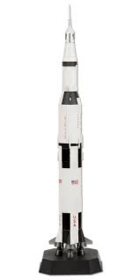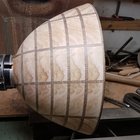I for one don't look for or care about a perfect curve. After 20 years of watching customers and bowls what they care about is how smooth the surface is. The persons fingers always touch the inside of the bowls and move up and down about a half inch. I do try to make the inside as closely matched to the outside. As long as it flows from top to bottom without humps or bumps and finished well is what I look for. I have never had anyone say "this bowl doesn't have a perfect curve". That's my 2 cents.
Bill, this is valuable information (duh). As a pre-purchase agonizer from way back and still going strong, I would say that there is more than one factor affecting a customer's purchasing decision and browsing habits. I think the OP makes a good point as well and there is a mountain of largely qualitative evidence to back up what people generally like and what is simply discordant. I would think that Quasimodo Bowl never gets picked up in the first place, so while it could have an interior surface and transition along that critical half-inch you have observed that produce the most sublime tactile experience imaginable (for a bowl), if the thing looks like a ransom note, nobody will even get close enough to experience that joy and Quasimodo never goes home with anybody except maybe the creator who can always use it in the wood stove.
You're in a perfect position to experiment, with both customers and the means and ability to crank out a few Truly Uglies in short order. Do whatever you can to make the outside of the bowl look like the aforementioned freak of nature without being too obvious about it. Maybe make a goblet shaped like the top sections of the old Saturn V rocket:

, with three or four different sized cylinders and hard angles at the transitions between sizes -- and the angles don't even match to boot. It is qualitative, but I think "everyone knows" that this would be a horrible goblet. So smooth it out a bit to make it look like you tried (ha ha, because you did), but still try to break a few of the harmony rules and get it to Uncanny Valley territory. Maybe make just a few pieces of different things like bowl, goblet, platter, etc., scatter them in with the rest of your fine work, and see how much dust or fingerprints these abominations collect. Tilt the scales and put them in front, up to the limit of "stinkin' up the whole neighborhood".
I am not ignoring the fact that you said that people do lift and purchase things that may or may not have been a perfect curve but nice feel. I humbly suggest that there are possibly some additional things going on there: at your level, you're probably making pleasing curves without even thinking about it. Curves don't need to be perfect to be pleasing. Maybe they only need to be not-ugly, and some other visual aspect like a nice color, figure, or something else about the piece is getting those customers' fingers on it to get this second sensory experience. That's where your hook gets set.
I do understand that shelf space is precious and has real dollar value, I know, I know... Your time is money too, but just watch to see if they get picked up, or do they just sit there like the proverbial pimple-faced geek all alone in the corner at the Prom. If you really wanted to be methodical about it, you would need to make them have nice insides (you already know the bad-feeling ones do not sell) and see if that overpowers the Ugly -- provided that any of them even get picked up. If nothing else this is valuable marketing information.
Thanks for sharing the tactile tip in any case; it implicitly speaks to the viability of online sales too, but some items are purchased to go into a case or on a shelf and not with the intention of fondling the piece anyway. It makes perfect sense. A layman still wants to know if they are getting value for the money, so they check the quality by seeing if the bowl is smooth on the inside. Is that a metric for quality in reality? Not necessarily, and certainly not the only one. But it's the only thing they have to go on, and something did drive them to pick it up and check. Not everyone is a layman, either, and in that case, this would be one of a larger number of things a savvy buyer would look for.
Last edited:

![DSC_0815[1].JPG DSC_0815[1].JPG](https://www.aawforum.org/community/data/attachments/42/42483-b765b03a64fe18cc6a933ddaae9cf625.jpg)
![DSC_0817[1].JPG DSC_0817[1].JPG](https://www.aawforum.org/community/data/attachments/42/42484-1a5d5dd5f9d3289e8c89b8d04aac2592.jpg)
![DSC_0813[1].JPG DSC_0813[1].JPG](https://www.aawforum.org/community/data/attachments/42/42482-6f9833d103c91c9aec4f532ce2bb01ab.jpg)
